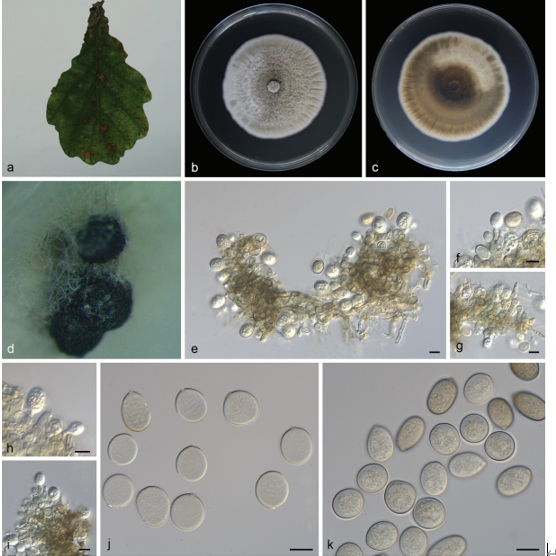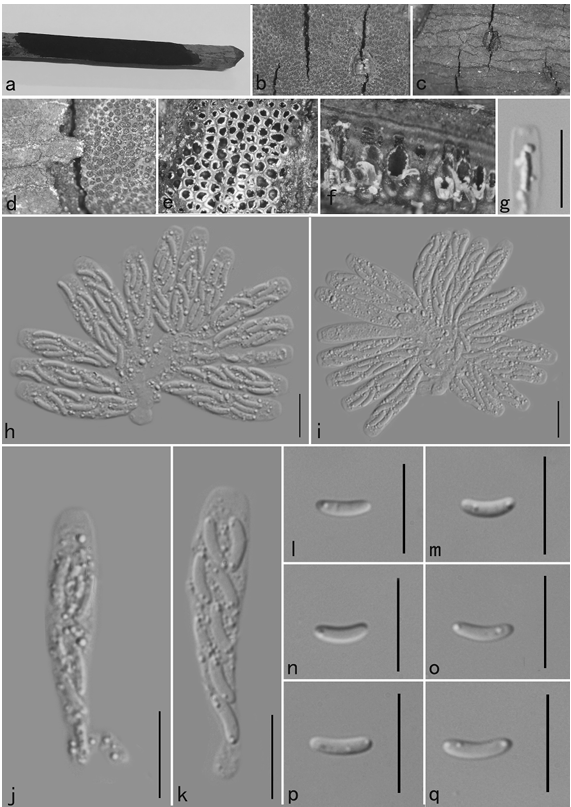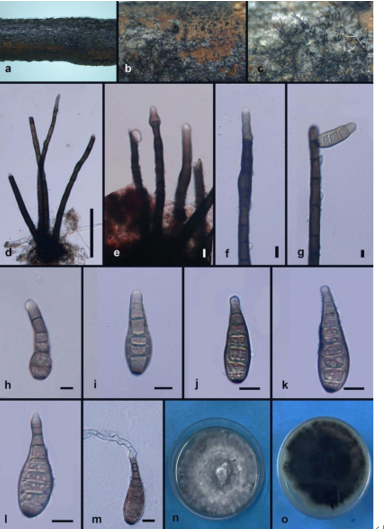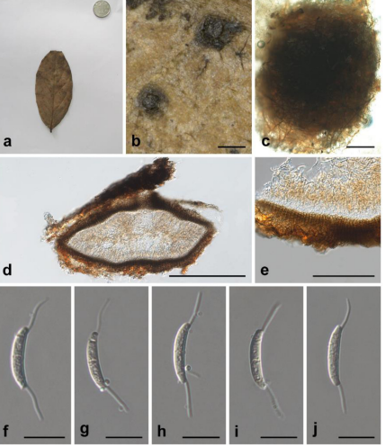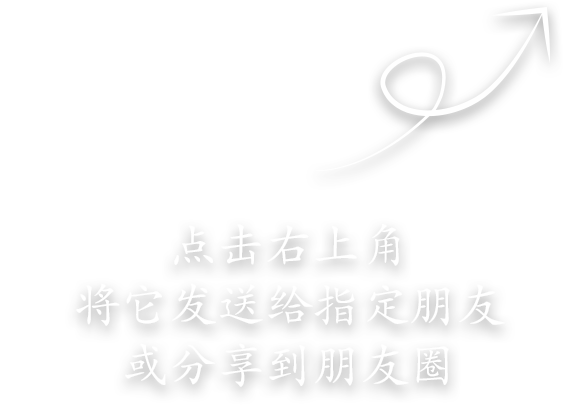Gymnosporangium shennongjiaense P. Zhao & L. Cai 2020
MycoBank MB832744
Holotype: China, Hubei, Shennongjia, 0, I on M. asiatica, 9 Sept. 1984, L. Guo (holotype HMAS55353). SSU, ITS and LSU sequences GenBank MN605025, MN605723 and MN605801.
Morphological description
Spermogonia, uredinia and telia not found. Aecia hypophyllous, roestelioid, foliicolous and caulicolous, 0.5–2.0 mm high; peridium cylindric, becoming fimbriate, peridial cells rhomboidoblong, 69–105 × 33–51 mm, outer walls smooth, inner walls verruculose with ridge-like papillae; aeciospores globoid, large coronate, 27–49 × 24–37 µm, walls yellowish, 2.0–5.0 µm thick.
Habitat: On M. asiatica.
Distribution: In China.
GenBank Accession:
Notes: This novel species differs from other Gymnosporangium species but resembles G. clavipes in aecial morphology, such as the dimension of peridial cells and aeciospores, position of aecia and peridia. Detailed morphological comparison indicated that the ornamentation of peridial cells and aeciospores can differentiate the two species. Gymnosporangium shennongjiaense has peridial cells with a verruculose inner walls, which differs from the tuberculate inner walls of G. clavipes. It also has aeciospores with large coronate walls, while G. clavipes has echinulate aeciospores. Molecular data further supported the phylogenetic distinction of the two species (Fig. 2). This novel species is found on M. asiatica and one unidentified Malus species in the southwest part of China, but its telial host is still unknown.
Reference: P. Zhao1, X.H. Qi 2, P.W. Crous3,4 et al.
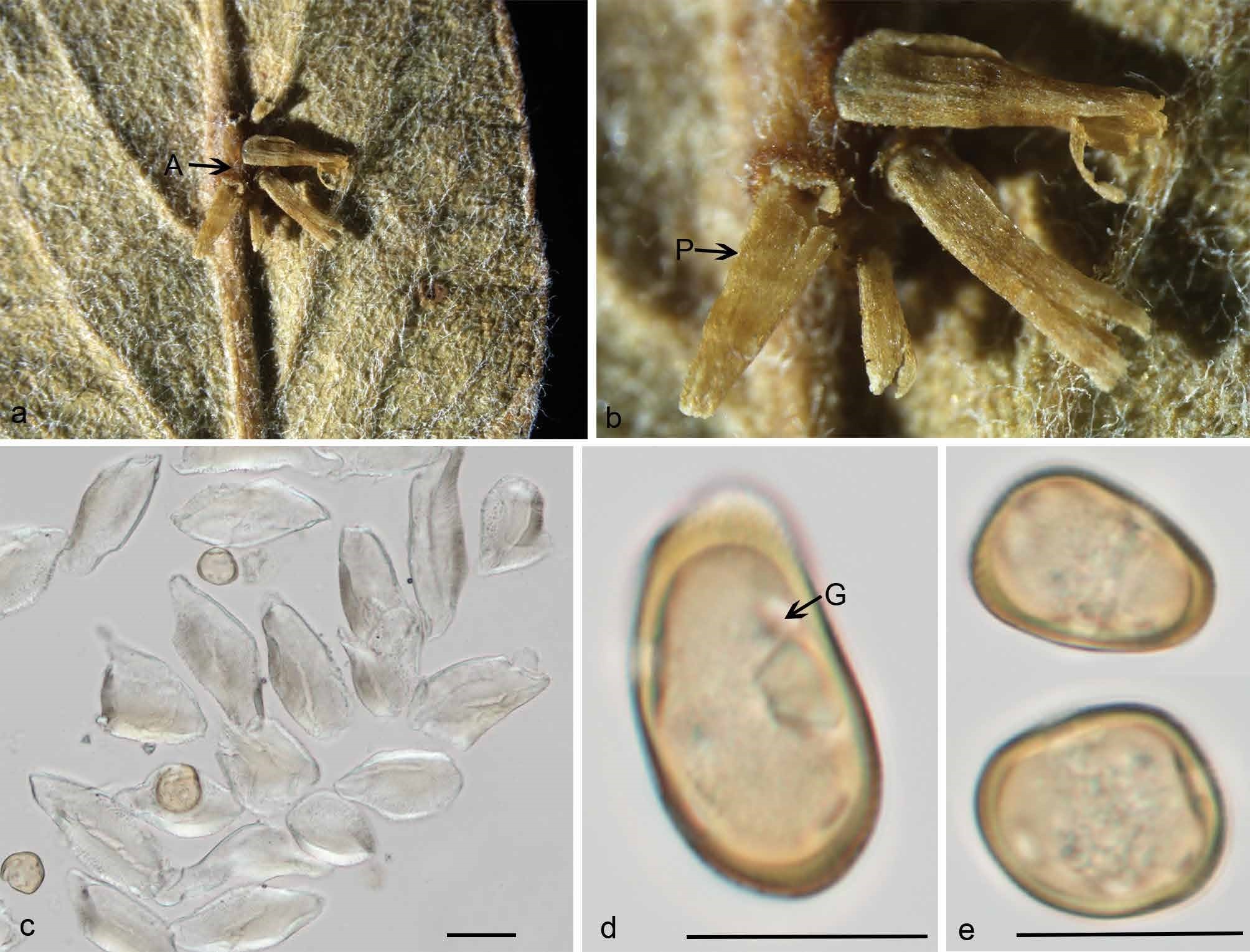
Morphology of G. shennongjiaense. a. Aecia (A) on the hypophyllous leaf surface; b. peridia (P) on the hypophyllous surface of leaf; c. oblong peridial cells with apparently thickened side walls; d. ellipsoid aeciospores with apparently thickened apex; e. globoid or ellipsoid aeciospores with scattered germ pore (G). — Scale bars: c–e = 20 µm.


